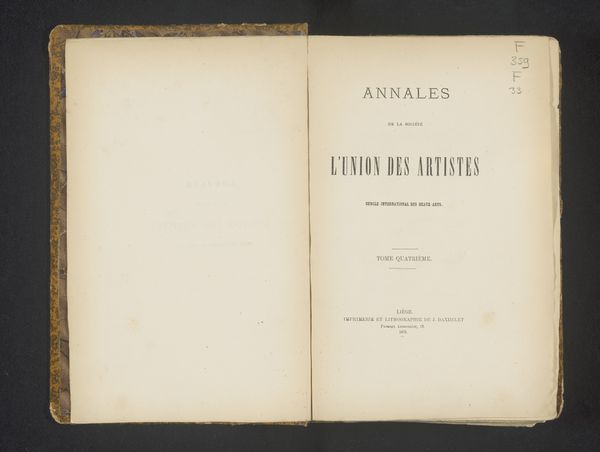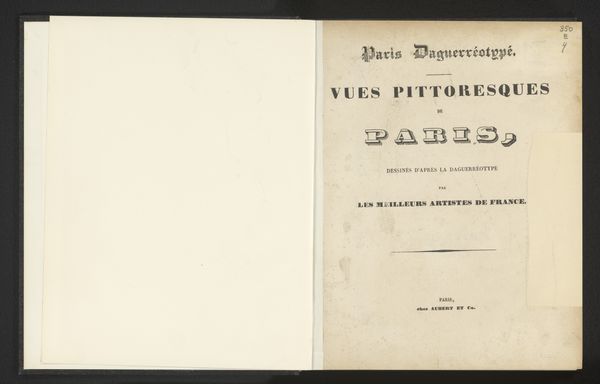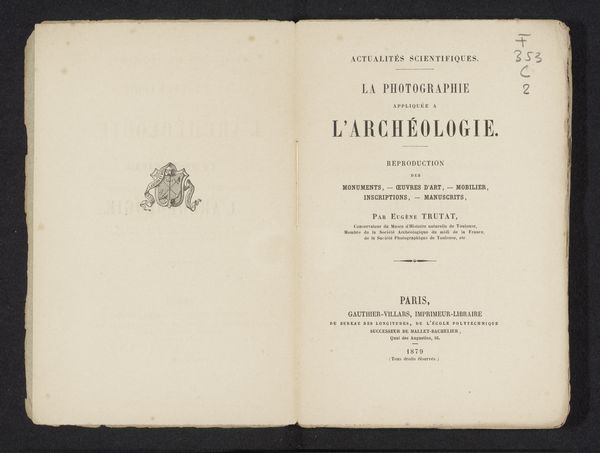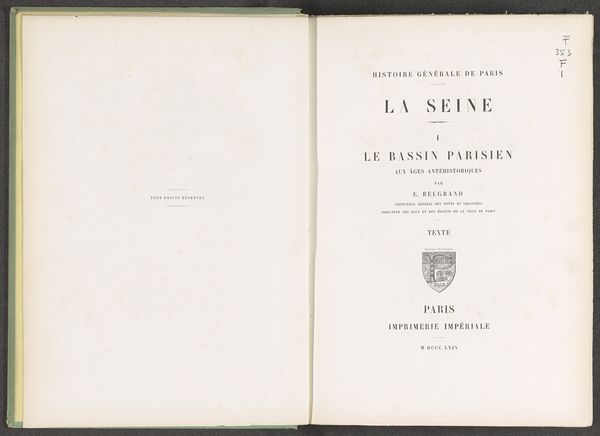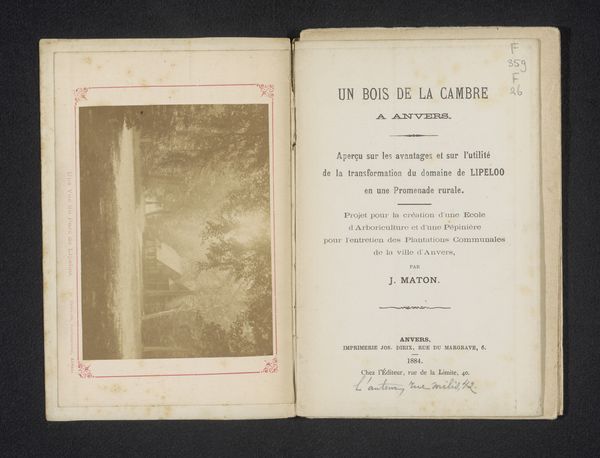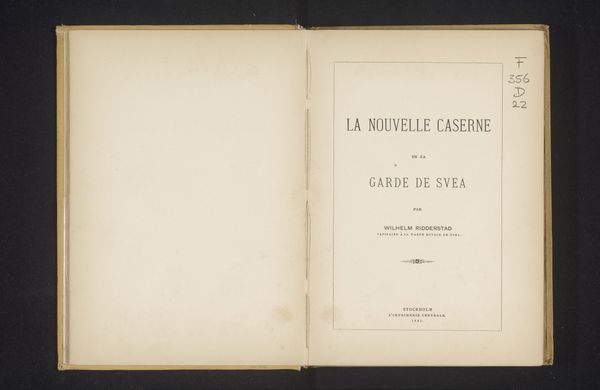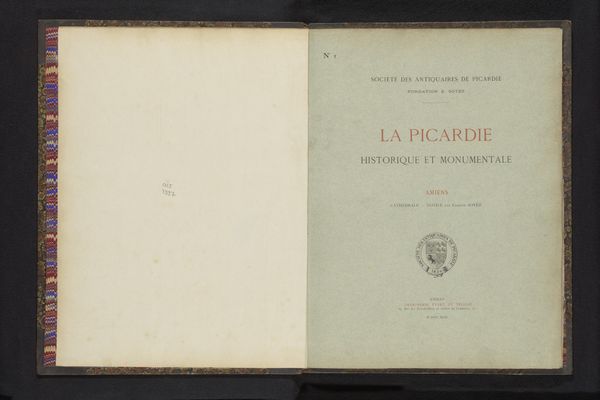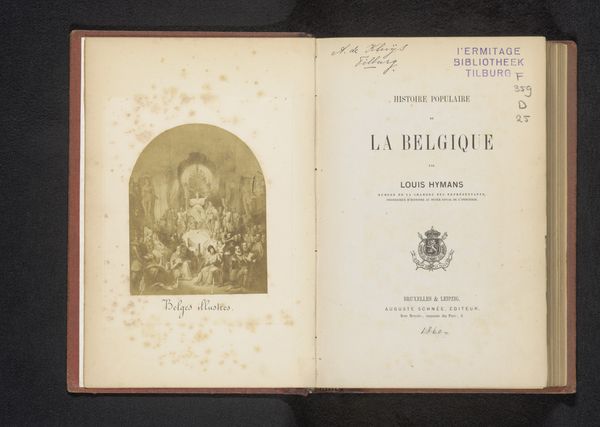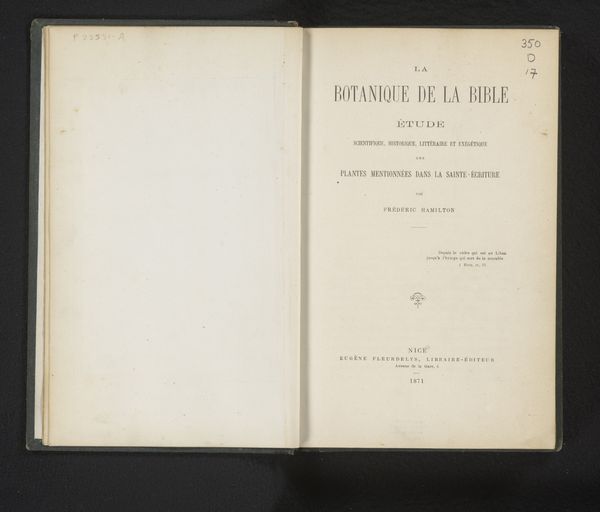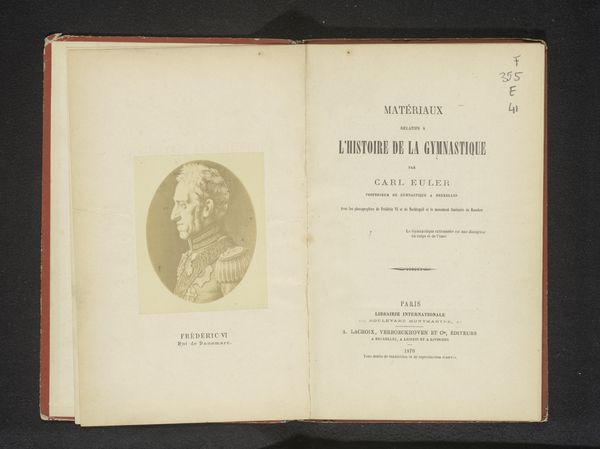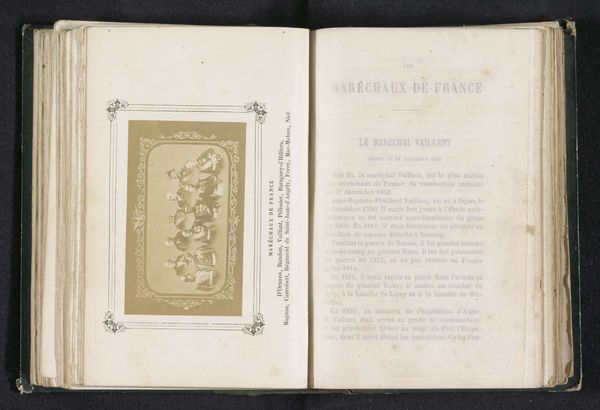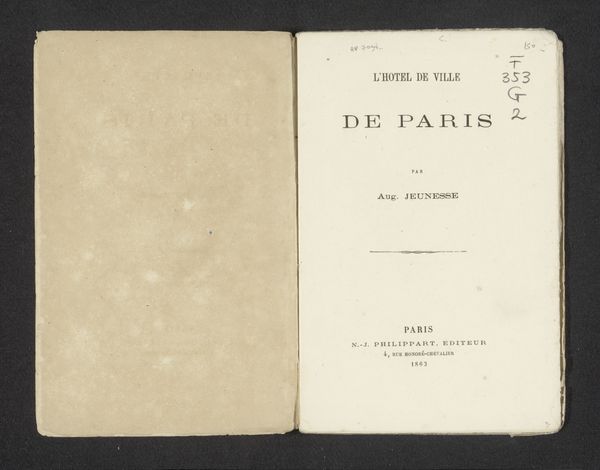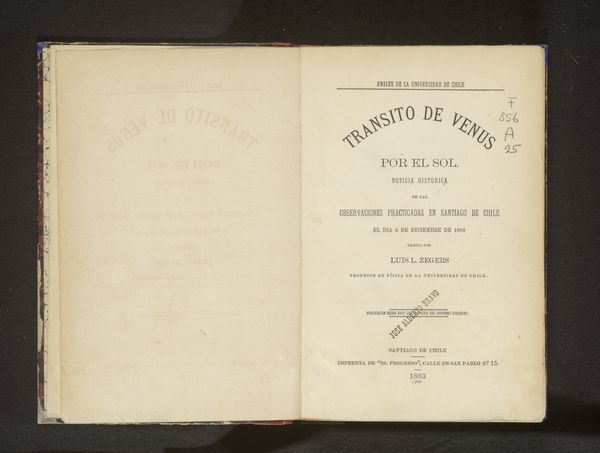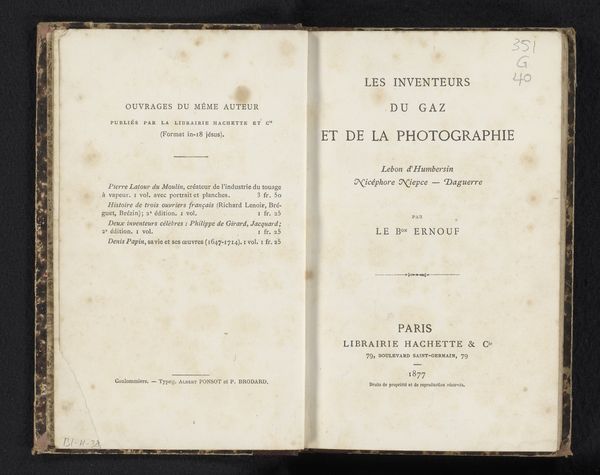
La Perse sous le règne de sa majesté impériale Mozaffer-Ed-Dine Schah Ghadjar / par Eugène Lazard et A. de Favereau 1902
0:00
0:00
print, paper, typography
# print
#
book
#
paper
#
typography
#
orientalism
#
modernism
Dimensions: height 269 mm, width 179 mm, thickness 11 mm
Copyright: Rijks Museum: Open Domain
Curator: Before us we have the title page of "La Perse sous le règne de Sa Majesté Impériale Mozaffer-Ed-Dine Schah Ghadjar," a book by Eugène Lazard and A. de Favereau, published in 1902. Editor: It looks so delicate. The typography and the way it's aged makes me think about its past. Did you notice the paper, the way the color has deepened over time, with spots appearing with the trace of touch and air. Curator: Absolutely. It is a printed work, so typography is central. The choice of font speaks to the aesthetics of the period and what was considered suitable for portraying Persia. Editor: The grand title and typeface choice suggest to me how European powers perceived Persia. "Sa Majesté Impériale"– it's drenched in that era's specific kind of respect, mixed with the undercurrents of power dynamics, I would suppose? Curator: That is correct. The book's existence is very much entangled with early 20th-century Orientalism and Modernism, a period of intense interest in, and often misrepresentation of, the East. Its aim was likely to offer Europeans an understanding of Persia. Editor: It's interesting how such a seemingly simple title page hints at larger narratives of cultural exchange and political maneuvering. The way it frames Persia– did the content match the cover's promise of imperial majesty, or did it venture into less flattering territory? Curator: The text, with its photographs and illustrations, documented the reign of Mozaffar al-Din Shah Qajar, offering insights into Persian society, politics, and culture through a Western lens. Editor: Makes me wonder how the Iranian perspective was included—or excluded. Was it a portrayal for or an encounter with? Curator: It represents both an attempt to engage and, inevitably, an exercise in defining another culture. Editor: Makes you reflect on how our understanding of the past is really mediated, always through layered interpretations. Curator: Precisely. Examining such items allows us to critique the historical gaze, to better understand how images and narratives can construct and, perhaps unintentionally, distort reality.
Comments
No comments
Be the first to comment and join the conversation on the ultimate creative platform.
